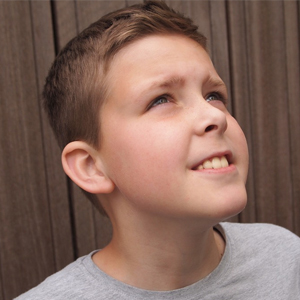Resolution of Sleep Apnea Following Chiropractic Care
From the June 12, 2017, issue of the Annals of Vertebral Subluxation Research comes a documented case study showing a patient with sleep apnea being helped with chiropractic. According to the U.S. Department of Health & Human Services National Heart, Lung, and Blood Institute, "Sleep apnea is a common disorder in which you have one or more pauses in breathing or shallow breaths while you sleep. Breathing pauses can last from a few seconds to minutes. They may occur 30 times or more an hour. Typically, normal breathing then starts again, sometimes with a loud snort or choking sound."
 The most common type of sleep
apnea is obstructive sleep apnea. This is when certain
throat muscles intermittently relax and block a personís
airway during sleep. One of the more noticeable signs of
obstructive sleep apnea is snoring. There are many different
treatments for this condition which include oral appliances,
vibration devises, sleep therapy systems, as well as some
more invasive surgical and medical procedures.
The most common type of sleep
apnea is obstructive sleep apnea. This is when certain
throat muscles intermittently relax and block a personís
airway during sleep. One of the more noticeable signs of
obstructive sleep apnea is snoring. There are many different
treatments for this condition which include oral appliances,
vibration devises, sleep therapy systems, as well as some
more invasive surgical and medical procedures.
According to this study, obstructive sleep apnea is more common in men than women, affecting 10% of men and only 3% of women. In the general population, the chances of developing obstructive sleep apnea increase until about the age of 50 to 60. After that age, the frequency decreases for both sexes.
In this case, a 51-year-old man went to a chiropractic clinic for multiple health issues. His chief concern was sleeping problems associated with sleep apnea. Additionally, he had been tripped by a dog 6 years prior and landed on his back. He was also involved in a car accident 5 years ago. He reported that he was suffering from recurring throat infections and had a history of motion sickness.
A chiropractic examination recorded multiple postural abnormalities, and abnormal spinal curvatures. Restricted spinal ranges of motion were noted at certain areas of the manís spine. Additionally, thermographic heat studies were performed along with spinal palpation confirming the presence of subluxations of this manís spine. Specific chiropractic care was then started to correct the subluxations.
As care progressed, the doctors reported that the postural anomalies first seen on his initial visit started to correct. The improvement in spinal motion also signaled the correction of subluxations.
After three visits, the man reported an improvement in his primary issue of sleep apnea. After 33 visits, he reported complete resolution of his sleep apnea issues. He also noted improvement in the nausea he was having with his motion sickness.
In their conclusion the authors wrote, "This case demonstrates the reduction and improvement of obstructive sleep apnea and associated sleeping problems following consistent subluxation-based chiropractic care in a 51-year-old male. This case provides additional evidence to the literature of the positive effects subluxation-based care can have on the improvement of obstructive sleep apnea."
 Strabismus is described on the website www.strabismus.org as
"...a vision condition in which a person can not align both
eyes simultaneously under normal condition." This study
simply states that strabismus is a condition in which the
eyes do not point in the same direction. It is estimated
that up to 5% of all children have this condition to some
degree.
Strabismus is described on the website www.strabismus.org as
"...a vision condition in which a person can not align both
eyes simultaneously under normal condition." This study
simply states that strabismus is a condition in which the
eyes do not point in the same direction. It is estimated
that up to 5% of all children have this condition to some
degree. The test used to determine a
specific food allergy is a blood test to measure
allergen-specific IgE levels. Kidshealth.org describes this
test by saying, "An allergen-specific immunoglobulin E (IgE)
blood test is done to check whether a person is allergic to
a particular substance. An allergic reaction occurs when the
immune system overreacts to something, often in the
environment, that's harmless to most people. To protect the
body from this perceived threat or allergen, the immune
system of an allergic person produces antibodies called
immunoglobulin E. The higher these levels are, the more a
person is allergic to a certain substance.
The test used to determine a
specific food allergy is a blood test to measure
allergen-specific IgE levels. Kidshealth.org describes this
test by saying, "An allergen-specific immunoglobulin E (IgE)
blood test is done to check whether a person is allergic to
a particular substance. An allergic reaction occurs when the
immune system overreacts to something, often in the
environment, that's harmless to most people. To protect the
body from this perceived threat or allergen, the immune
system of an allergic person produces antibodies called
immunoglobulin E. The higher these levels are, the more a
person is allergic to a certain substance. The authors of this study begin
with an ominous warning by noting, "If left untreated,
otitis media can cause temporary or permanent loss of
hearing which can in turn impair speech, language
development, and create learning difficulties." They note
that two out of three children experience at least one
episode of otitis media before the age of three and it is
also the most common diagnosis for children under 15 years
of age.
The authors of this study begin
with an ominous warning by noting, "If left untreated,
otitis media can cause temporary or permanent loss of
hearing which can in turn impair speech, language
development, and create learning difficulties." They note
that two out of three children experience at least one
episode of otitis media before the age of three and it is
also the most common diagnosis for children under 15 years
of age.  The
head down position, known as the vertex position, is the correct
position for delivery as it provides the safest passage
through the birth canal. A breech presentation is when
either the feet or the buttocks are downward. According to
this study, about 3.2% off all pregnancies are in a breech
presentation during the last stages of pregnancy.
The
head down position, known as the vertex position, is the correct
position for delivery as it provides the safest passage
through the birth canal. A breech presentation is when
either the feet or the buttocks are downward. According to
this study, about 3.2% off all pregnancies are in a breech
presentation during the last stages of pregnancy. The
most common mechanism for foot drop is damage or entrapment
of the peroneal nerve. This nerve is a branch that comes off
the larger sciatic nerve and innervates the muscles in the
front of the lower leg and foot. Damage to this nerve
anywhere along the path from the origin at the lumbar spine
down to the foot can result in symptoms of foot drop or a
loss of sensation in the webbing of the toes.
The
most common mechanism for foot drop is damage or entrapment
of the peroneal nerve. This nerve is a branch that comes off
the larger sciatic nerve and innervates the muscles in the
front of the lower leg and foot. Damage to this nerve
anywhere along the path from the origin at the lumbar spine
down to the foot can result in symptoms of foot drop or a
loss of sensation in the webbing of the toes.